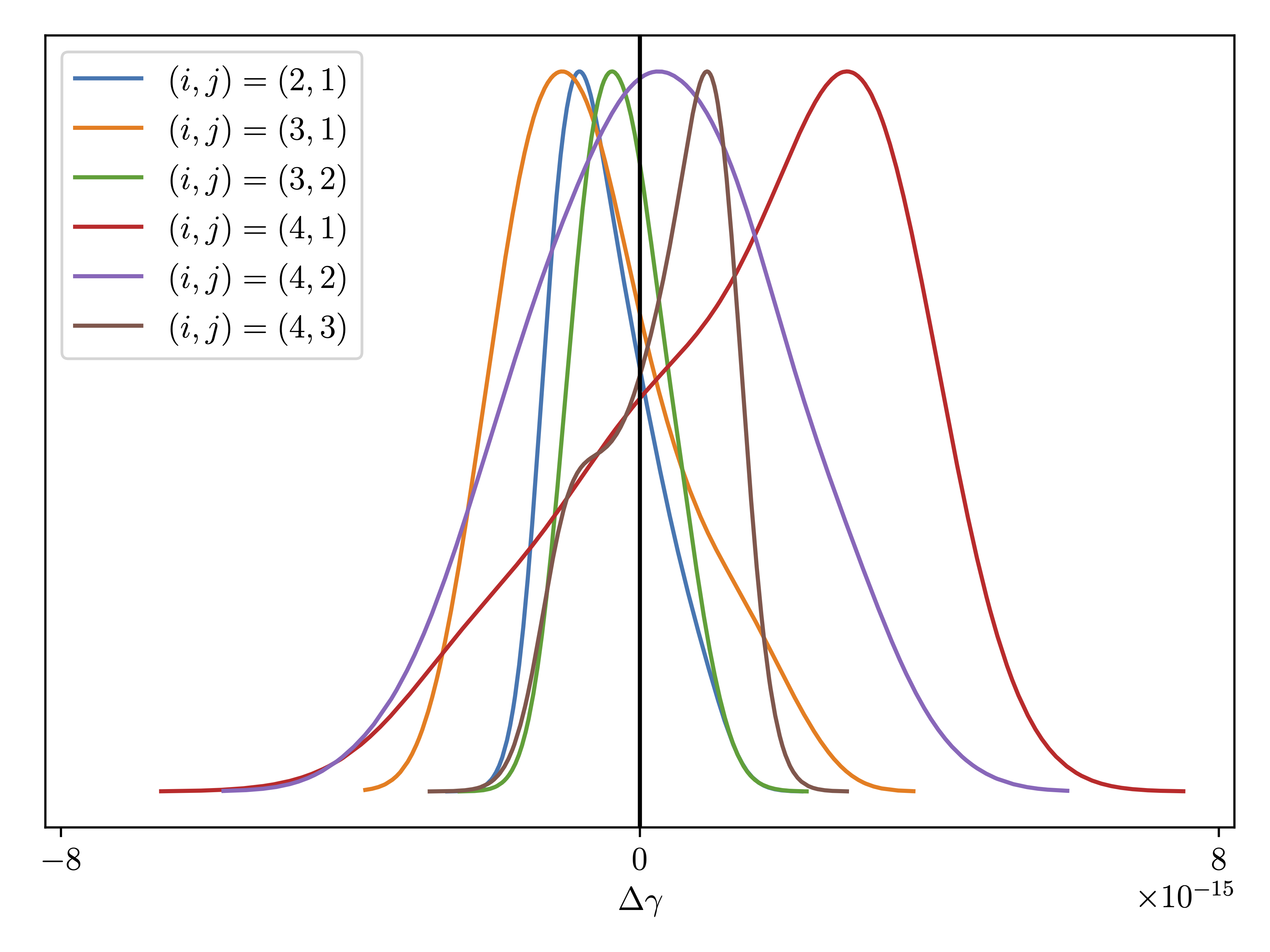Constraints on equivalence principle violation from gamma ray bursts
Published in Phys. Rev. D, 104(8):084025, 2021
Recommended citation: D.J. Bartlett, D. Bergsdal, H. Desmond, P.G. Ferreira and J. Jasche (2021). "Constraints on equivalence principle violation from gamma ray bursts." Phys. Rev. D, 104(8):084025.
Abstract
Theories of gravity that obey the Weak Equivalence Principle have the same Parametrised Post-Newtonian parameter $\gamma$ for all particles at all energies. The large Shapiro time delays of extragalactic sources allow us to put tight constraints on differences in $\gamma$ between photons of different frequencies from spectral lag data, since a non-zero $\Delta \gamma$ would result in a frequency-dependent arrival time. The majority of previous constraints have assumed that the Shapiro time delay is dominated by a few local massive objects, although this is a poor approximation for distant sources. In this work we consider the cosmological context of these sources by developing a source-by-source, Monte Carlo-based forward model for the Shapiro time delays by combining constrained realisations of the local density field using the Bayesian origin reconstruction from galaxies algorithm with unconstrained large-scale modes. Propagating uncertainties in the density field reconstruction and marginalising over an empirical model describing other contributions to the time delay, we use spectral lag data of Gamma Ray Bursts from the BATSE satellite to constrain $\Delta \gamma < 2.1 \times 10^{-15}$ at $1 \sigma$ confidence between photon energies of $25 {\rm \, keV}$ and $325 {\rm \, keV}$.
 Posteriors on the difference in the PPN parameter $\gamma$ between BATSE energy bands, $\Delta \gamma_{ij}$, for the different time delay pairs, marginalised over the noise parameters. These constraints use the noise models which minimise the BIC.
Posteriors on the difference in the PPN parameter $\gamma$ between BATSE energy bands, $\Delta \gamma_{ij}$, for the different time delay pairs, marginalised over the noise parameters. These constraints use the noise models which minimise the BIC.
